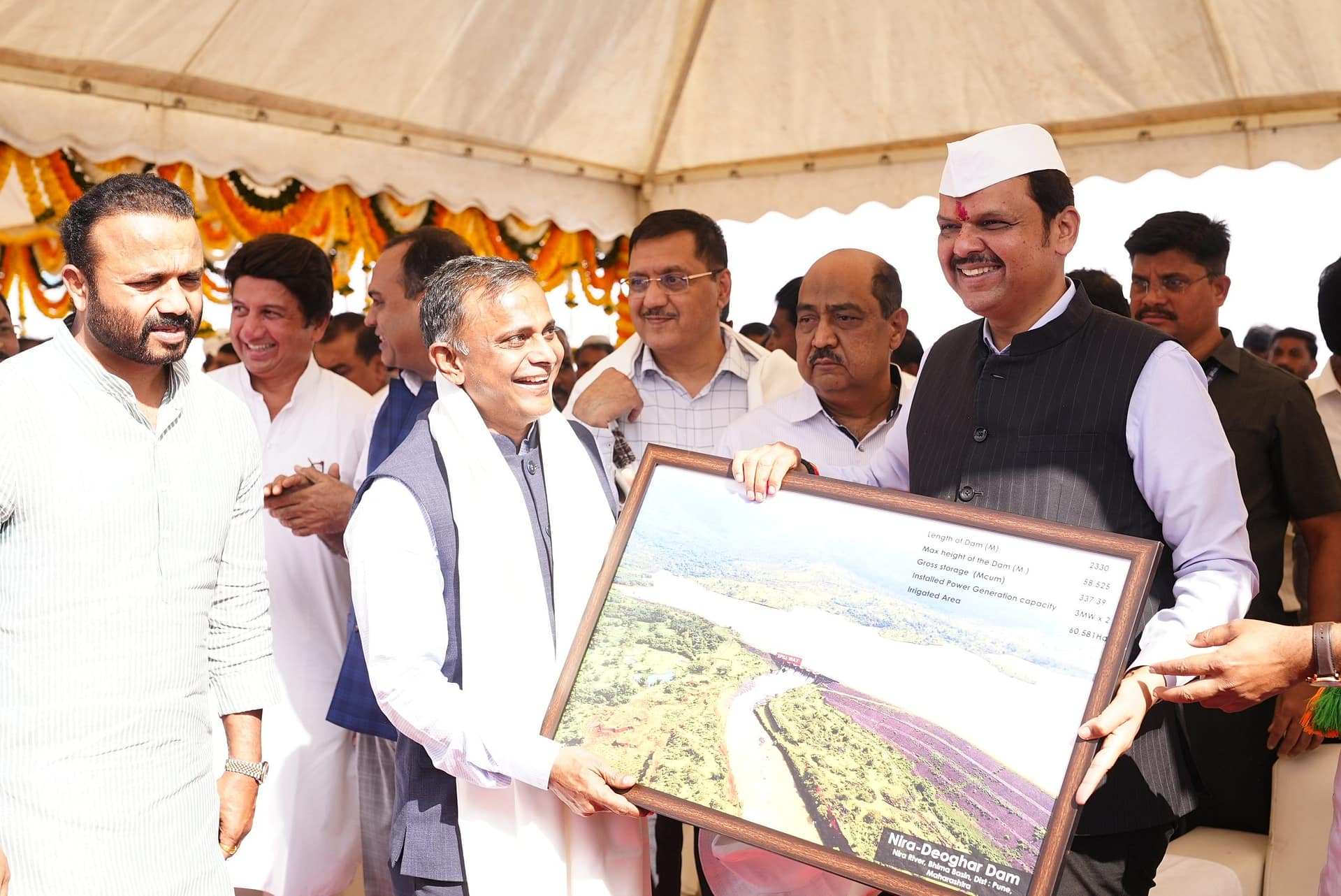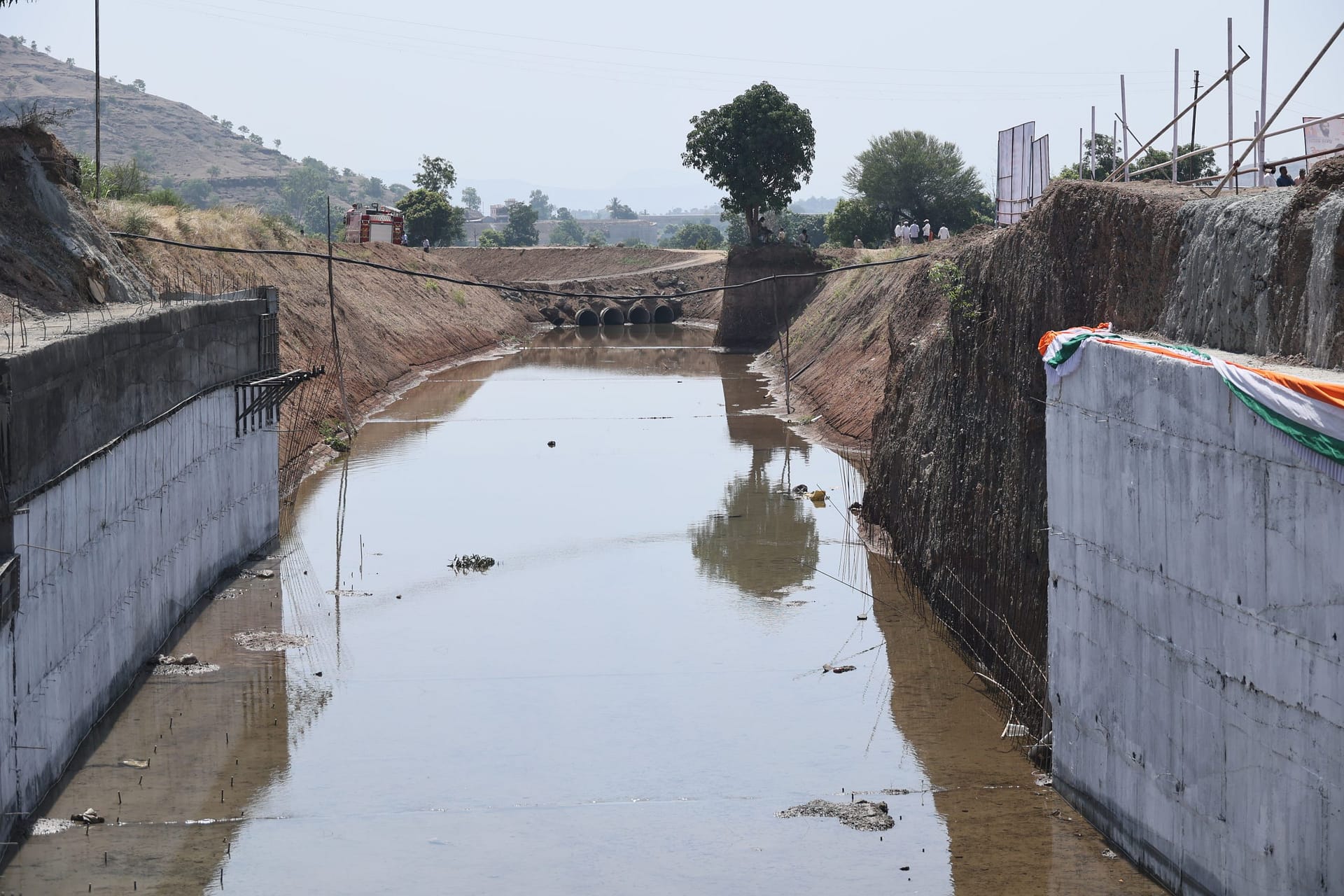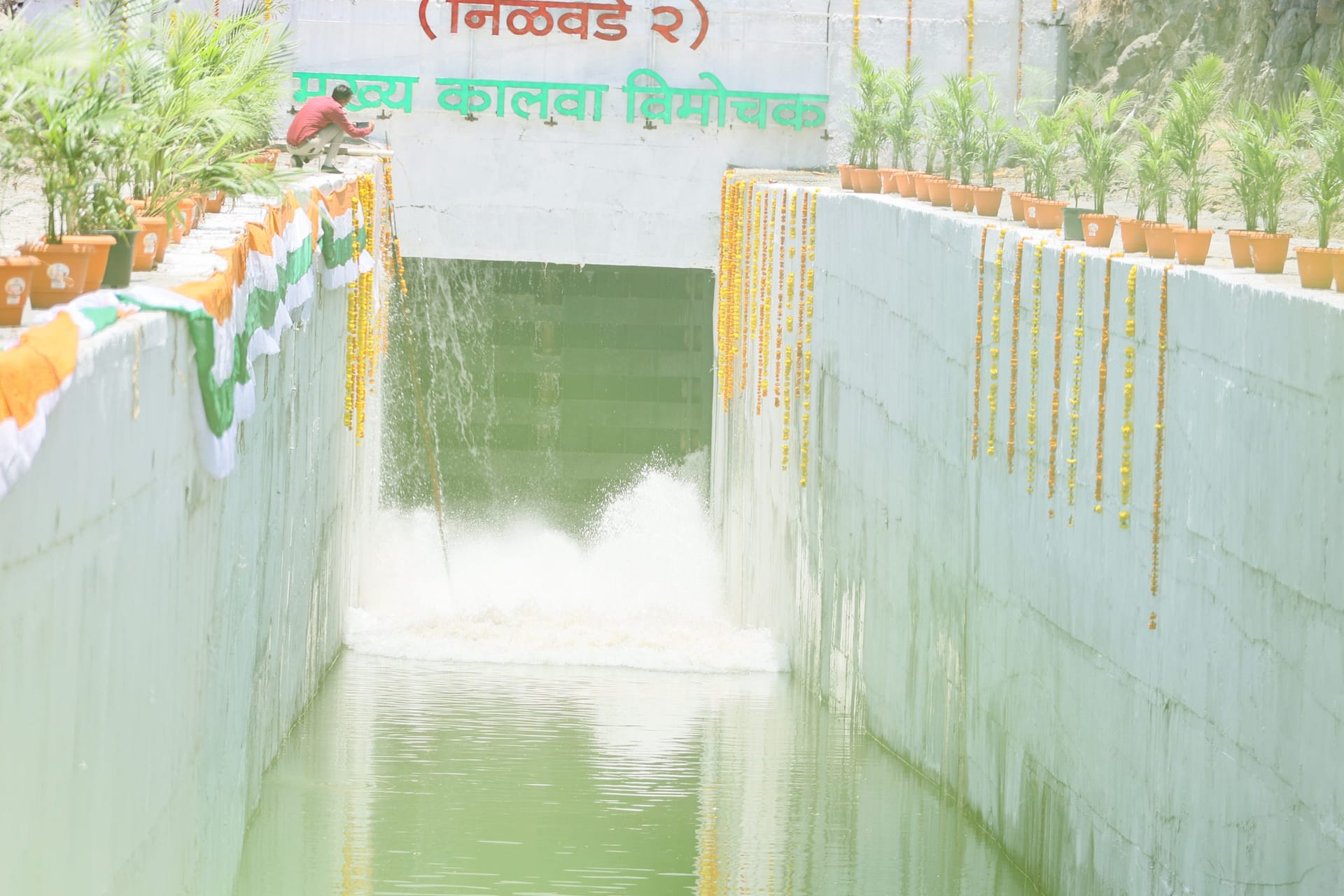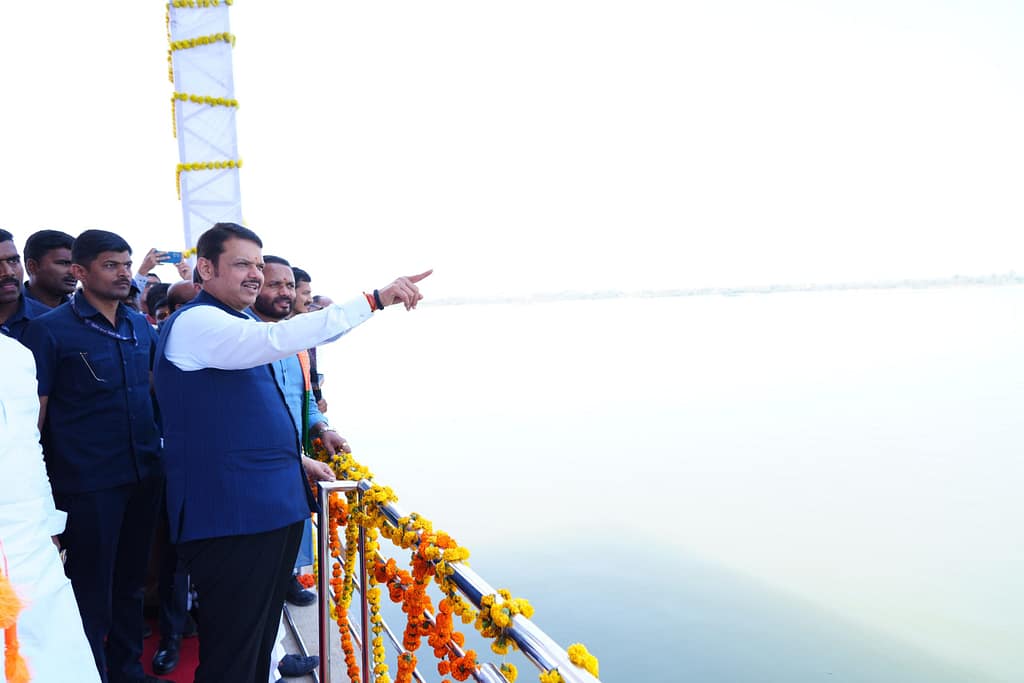Ahilyanagar, earlier known as Ahmednagar, is the largest district in Maharashtra, spread over three different climatic regions: the Western Hilly range, the Central Plateau, and the northern and southern plains. Akole tehsil, where the Nilwande dam is located, is the westernmost tehsil of the Ahilyanagar district. Situated on the crest of the Sahyadri hills, Akole has a geographical advantage that invites high precipitation rates, which also makes it an ideal location for building a multipurpose dam for irrigation as well as hydel power generation.
But the rainfall rate decreases significantly towards the eastern side of the district, located on the other side of Sahyadri, as the south-westerly wind that pours generously on the western side gets blocked by the mountain from moving towards the east, creating a rainshadow region encompassing the entire central plateau. Historically, the eastern side of Sahyadri has seen many droughts, causing severe blows to agriculture and livelihood.
So, quite expectedly, when PM Modi performed Jalpujan and inaugurated the Nilwande Dam along with its canal network on 26 October 2023, the people living in the downstream areas became overwhelmed with boundless joy because the project was finally through after 50 years of apathy. The event also marked the intent of Devendra Fadnavis, to fast-track the key developmental projects, which were shelved by the previous MVA government. On May 31, 2023, CM Eknath Shinde and DY. CM Devendra Fadnavis, just about 11 months after forming the government, witnessed the successful water release test from the dam through the 85 km. left canal.

The Nilwande project at a glance
The Nilwande Dam is a combination of two connected gravity dams made of roller-compacted concrete, the first of its kind in India. They are located in Ghatghar village, Ahmednagar district, Maharashtra, India. These dams were constructed to produce a lower and upper reservoir for a 250 MW pumped-storage hydroelectric power generation station. The upper Nilwande Dam, which is built at a height of 73.91 meters (242.5 ft.)15 meters (49 feet), is located on the Pravara River, a tributary of the Godavari River. The lower Nilwande dam is built at a height of 15 meters (49 feet) on the Shahi Nalla River, situated south-west of the upper reservoir in a steep valley. This hydropower project diverts water from the Godavari river basin to a west-flowing river in the Western Ghats, which is located outside the basin.
Apart from power generation, the project will greatly benefit the people of 182 villages in 7 Tehsils (6 in Ahmednagar district and 1 in Nashik district), for agriculture and domestic use of water, connecting them by the left and right canals.
The 85-kilometer-long main left canal will help with irrigation and drinking water in six talukas: Akole, Sangamner, Srirampur, Rahta, Kopargaon in Nagar district, and Sinnar in Nashik district. Around 43,865 hectares of land across 113 villages will come under irrigation. The 97-kilometer length of the main right canal will irrigate 20,395 hectares of land.
The irrigation would serve a total of 64,260 hectares spread across six talukas. Apart from the canals, the water supply for smaller distributaries will be carried out using a pipe distribution network, the first time in the country. This strategy is intended to help save water and ensure that every drop is used effectively.

A brief history of the project
The project was approved by the name of Mhaladevi in 1970 when Vasantrao Naik was the Chief Minister of Maharashtra. At that time the water holding capacity of the dam was decided to be at 11 TMC with the project cost of Rs. 7.9 crores. But for almost 25 years through successive governments, including those of Congress and the NCP, headed by leaders from western Maharashtra, the project files gathered dust in the ministry. In 1995, when the BJP-Shiv Sena coalition government came to power in the state, the project was recalled and gained some momentum. It was decided that instead of Mhaladevi, the project would be built on the river Pravara in the village of Nilwande.in Akole. However, the inordinate delay escalated the project cost to Rs. 5177 Cr. from the initial 7.9 Cr. The dam’s construction started in 1999; the capacity was reduced to 8.52 TMC.
The construction of the dam was completed in 2014 when Devendra Fadnavis became the CM. However, the work for the canals was to be started. During his tenure as chief minister (2014-2019), waterman Fadnavis reviewed all pending irrigation projects and directed the water resources department to accord top priority to incomplete works. As a result, water resources minister Girish Mahajan decided not to allow new irrigation projects and focused on fast-tracking all incomplete work instead. Till 2019, the work of canals progressed smoothly before the MVA government took over the charge. During the MVA government, the canal work for the Nilwande project was shelved again like most other developmental projects initiated by Devendra Fadnavis.

Devendraji returned to power on 30 June 2022. The development man became the Deputy Chief Minister in the government and took the responsibility of the water resources ministry. In no time, all the incomplete irrigation projects like Gosekhurd, Nilwande, etc. were revived. In March 2023, the Shinde-Fadnavis government approved Rs. 5177 crore for the unfinished development of the Nilwande dam by issuing the final amended administrative sanction. The Waterman deputy chief minister also included Rs 425 crore for the dam in the budget. It helped to restart work on the dam’s left and right canals.
Government Decisions & GR’s
Cabinet Decision
Related posts on X
Related Video

